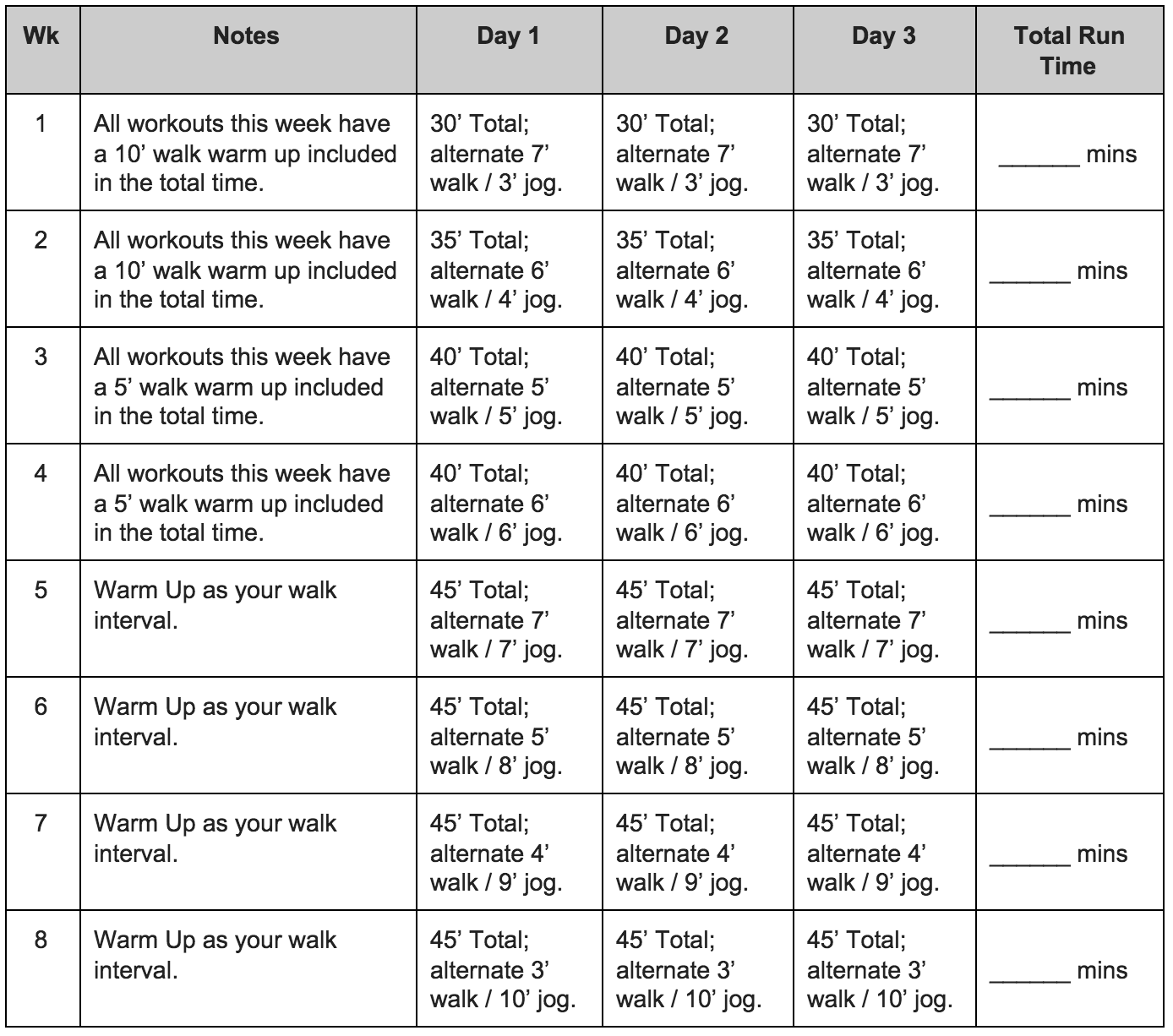Run Re-Entry Protocol [Includes Basic Plan]
Getting injured sucks. No really. There’s the actual pain, and then there’s the “I’m not working out!” pain. Then Physical Therapy. You have to do time in Run Jail and fight the evil lizard brain that wants you to just give up. Then rehab doing stuff like Pool Running and using the Elliptical Machine.
But finally, after what feels like an eternity, you are clear to run once again.
But you can’t just lace up your kicks and take off for the 6-miler of your dreams. Unless you just love to suffer.
The only thing worse than an injury is messing up the return to running and getting REINJURED.
Step One: Get Clearance
There is a distinct difference between you being ready to run and your body being ready to run. Assuming that you been working with a professional, you shouldn’t attempt to start running again until they tell you it’s okay.
You are welcome to bug them at every visit for when that time will happen. But you can’t run when they say not to.
It’s important to clarify with your healthcare provider that you plan on returning reasonably. It’s important to remember that you are part of that 1% – the people who love to exercise and exercise significantly more than the rest of the population.
When your primary hears you say exercise, they fear you plan on going crazy and getting right back into trouble again.
It might even help for you to outline, using the template below, what’s your plan will be. If you can demonstrate that you have a practical approach in place, they will be more likely to endorse your return to running.
Step Two: Define the Run Protocol
There’s no such thing as just getting back out there and running again. When you get back to running you will have to get used to running again. Not the same as you did before – after all, that’s what got you into trouble!
Your job is to run better using the new strength, skills and familiarity with your body that you developed in therapy.
The best way to do this is to take your time. Before we get into the minutiae of what a run session looks like, let’s define what anyone session should look like.
(1) Warm Up – If you don’t have a stationary bike available then some brisk walking for between 10 and 15 minutes will do. We want you to be loose before you attempt any running.
(2) Activation Exercises – Do yourself a favor and go through some of the drills/exercises that you been working on. If you don’t have anything in particular, you can use a dynamic warm-up such as this one by Jason over at Strengthrunning.com.
(3) Actual Running – Based on the criteria we outline below this will be your main set of running.
(4) Warm Down – We recommend that you plan on walking easily at least one minute for every mile you have run. So a 5-mile run gives you a five-minute walking cool down. Follow this with some light stretching as you rehydrate and take in recovery nutrition. Exiting your run is just as important as how you start it!
Step Three: Have a Re-Entry Timeline
The re-entry stuff is straightforward. This is basically a run / walk approach built over a few weeks to gradually include more running. We maintain a set amount of time on your feet, swapping out walking time for running time as you advance.

Additional Notes:
- You are free to walk anytime you want as a general leg strengthening activity. It helps!
- No back-to-back running days until Week Four at a minimum, simply not worth it!
- Pool running is also great exercise, but it will test you mentally. It’s a great alternative to run miles in the last few weeks to your big race if you need to back off the running.
Feedback or Questions?
Please Reply in the comments below, or message us on Facebook: www.facebook.com/marathonnation





